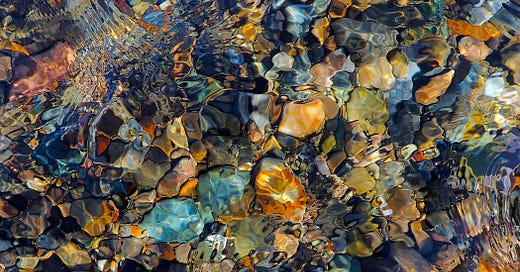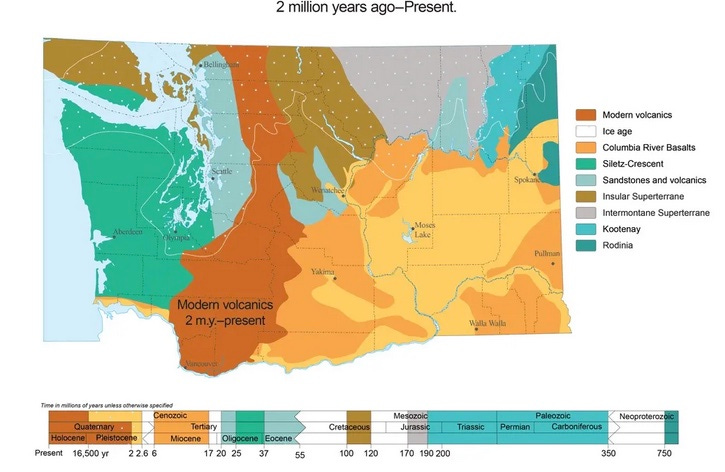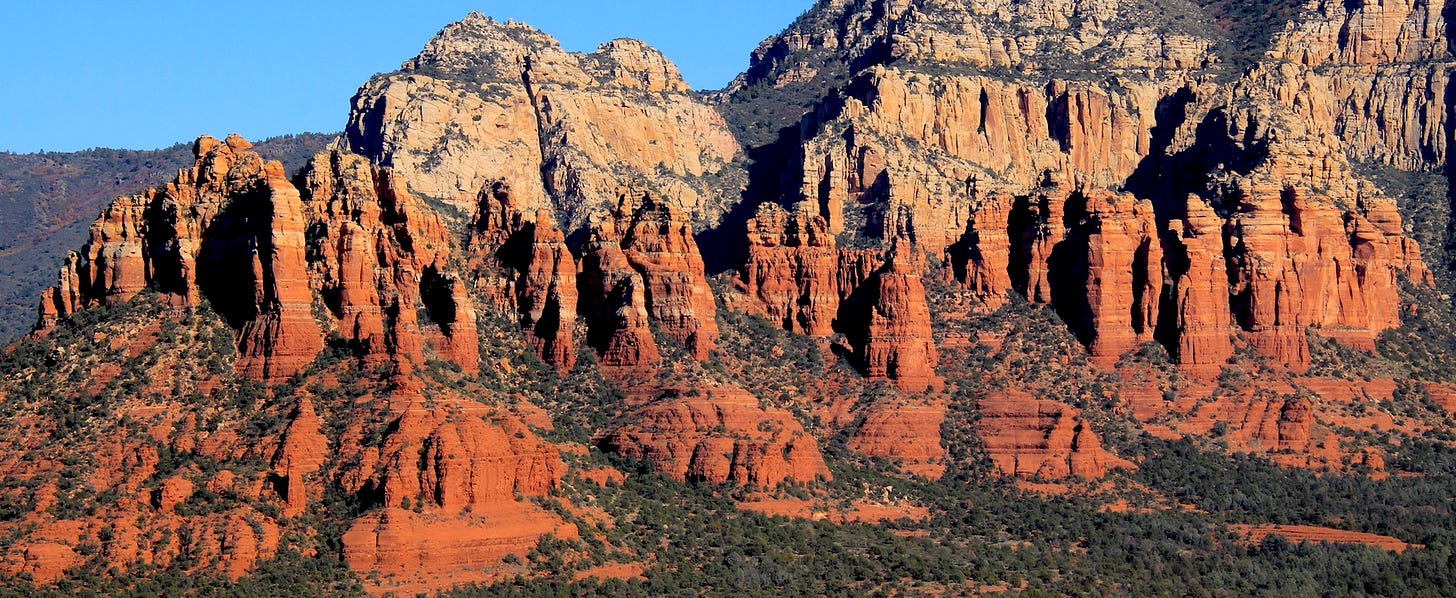The Cosmos, Ice Age flood cobbles in Spokane River water
Time on the Rocks
Two days ago I had just stepped onto the stretch of rocky shoreline in west Spokane where I finish gearing up for my near-daily swims in the river, most often with fins, snorkel, and camera. Without thinking I reached down and picked up a tan and blue cobble.
“A skipping rock?”
It was a voice from the shade of a shoreline tree, to my left. A woman’s voice.
“Nope,” I answered, with a laugh, “just caught my eye. I don’t even think about it anymore.”
I knew instantly what the stone was, where it came from, and how old it was. I explained that it wasn’t anything that the river brought in, but that it almost certainly arrived on a glacial flood that rampaged down from Lake Pend Oreille, from the northeast, some 17,000 years ago. I love the story. I enjoy sharing it.
I got the idea for the “Provenance” series after a couple long discussions with my friend Steve Box, a recently-retired USGS geologist who is chock full of information about Northwest and Alaskan rocks and who (blessedly) harbors a deep reservoir of patience for my questions.
Most of Pacific Northwest terrain is quite young, and this includes the thick cakes of black and brown basalt that frame much of Spokane and the river gorge where I swim. The basalt (formed from vast lava flows) is less than 17 million years old, which is not much time at all on a planet born 4.5 billion years ago. The rocks on the shore, like the one I picked up, are much older than the basalt, with quite a few dating back 1.4 billion years. Most of them formed as mud and siltstone in a very deep and ancient basin that some geologists think was created by a giant meteor or asteroid strike.
From Spokane, the rocks tend to get older as you go east, into the Idaho mountains and younger as you go west into and beyond the Cascades. Spokane actually sits pretty much where an ancient shoreline existed until about 200 million years ago, when a succession of landforms began arriving on oceanic plates and essentially built out the rest of Washington (and Oregon) as we know them today. A geologist would write the previous sentence differently, but that’s beside the point, at least for this exercise.
Outcrop of serpentinite at Blewett Pass, north of Ellensburg
“Provenance” is a word geologists use to refer to the beginning of things, typically with reference to a specific rock or rock formation. But, of course, even beginnings can have earlier sources,—earlier beginnings. So, I wanted to start the series in deep time, to set the stage for the first stars and then—importantly—the explosions of dying stars the created the elements of life—the oxygen, carbon, calcium, etc., that make us possible.
The series is spread out chronologically, amidst other posts about everything from acrobatic birds to unethical Supreme Court judges. I’m not done yet, so it will continue to grow, likely in directions that I do not yet foresee. Which would be just fine with me. In the meantime, I wanted to use today’s post to bring it a place in time, if even for a short time.
The Pillars of Creation, star-forming gas clouds photographed by the James Webb Telescope.
Prelude: A Most Unusual Priest
•Peter Higgs and the ‘god particle’ that isn’t
•Assembling Washington, a quick geologic tour
•A first encounter with a surreal, exotic rock
•How to find and appreciate a Bretz Hill
Schnebly Hill limestone, Sedona, Arizona
•An essential off-ramp to The Feathers
•Living on the Edge of the Really Big One
•A place every Washingtonian should visit (The Drumheller Channels)
Douglas Creek in Moses Coulee
—tjc











